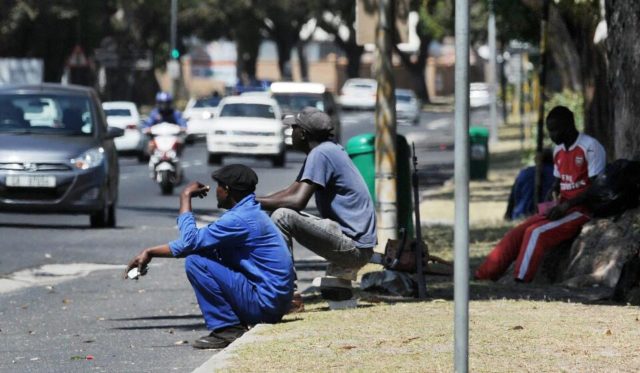Almost one in four people in the Northern Cape lost their jobs in the last quarter of this year.
ALMOST one in four people in the Northern Cape lost their jobs in the last quarter of this year.
The Province was the hardest hit in the country with a total of 80 000 job losses in the last quarter – a reduction of 24% in the number of people employed.
According to the Quarterly Labour Force Survey for the second quarter of 2020, released on Tuesday by Stats SA, a total of 336 000 people were employed in the Province during the first quarter (January to March) of this year. In the second quarter of this year (April to June), the number of employed people in the Northern Cape dropped to 255 000.
The figures released by Stats SA, shows that the largest employment decreases were recorded in Gauteng (down by 661 000), KwaZulu-Natal (down by 375 000), Western Cape (down by 321 000), Limpopo (down by 236 000) and Eastern Cape (down by 212 000).
“Although the Northern Cape recorded the least decrease in the number of employed persons at 80 000, it is the hardest hit Province since this is a 24,0% reduction in employment between the two quarters.”
The official unemployment rate in the Northern Cape for the second quarter of this year is 25.1%. This is slightly lower than the previous quarter (January to March 2020) when it was 27%, while in the second quarter of 2019, the official unemployment rate in the Province was reported as 29.4%.
The expanded unemployment rate in the Province, however, increased to 45.1% (from 40% in the last quarter and 44.8% at the same time last year.
According to Stats SA, the expanded unemployment rate nationally increased by 2,3 percentage points in Q2: 2020 compared to Q1: 2020. “This is reflective of the fact that people were available for work but did not actively look for work. All provinces recorded increases in the expanded unemployment rate except in Free State, where it decreased by 3,3 percentage points. The largest increase was recorded in Northern Cape (up by 5,1 percentage points), followed by Eastern Cape (up by 3,9 percentage points), KwaZulu-Natal (up by 3,2 percentage points), Western Cape (up by 2,5 percentage points), Gauteng (up by 2,4 percentage points) and Limpopo (up by 2,1 percentage points).”
One of the biggest bloodbaths in the Province in terms of jobs lost was in the manufacturing sector where 53.9% of jobs were lost in the last quarter, while 62.8% of jobs were lost in this sector in the last year. In the second quarter of last year, this sector employed 17 000 people in the Province, while in the second quarter of this year, this number dropped to 6 000.
The agricultural sector in the Province also took a heavy knock, declining by 41.8% quarter to quarter (from 33 000 in Q2 2019 to 24 000 in Q2 2020), as well as the construction sector, where the number of jobs halved quarter to quarter from 24 000 in Q1 2020 to 12 000 in Q2 2020.
The number of people employed in the mining sector in the Province dropped from 35 000 to 27 000 in the last quarter, although it increased from Q2 2019, when 26 000 people were employed in this sector.
The number of people employed in private households in the Province also halved, dropping from 25 000 in Q2 2019 to 12 000 in Q2 2020.
The total number of people employed in the Province in Q2 2020 was 255 000, down from 301 000 in Q2 2019. While the number of unemployed decreased from 244 000 in Q2 2019 to 210 000 in Q2 2020, the number of not economically active increased from 257 000 in Q2 2019 to 345 000 in Q2 2020.
According to the figures released by Stats SA, the number of employed persons nationally decreased by 2,2 million to 14,1 million compared to the first quarter of 2020.
Nationally unemployment declined substantially as well by 2,8 million to 4,3 million compared to quarter 1 of 2020, and resulting in a decrease of 5,0 million (down by 21,4%) in the number of people in the labour force.
The number of discouraged work-seekers, like the number of unemployed, decreased by 447 000, and the number of people who were not economically active for reasons other than discouragement increased by 5,6 million between the two quarters, resulting in a net increase of 5,2 million in the not economically active population.
“These changes resulted in a significant decrease of 6,8 percentage points in the official unemployment rate from 30,1% in quarter 1 2020 to 23,3% in quarter 2 2020. The unemployment rate according to the expanded definition of unemployment increased by 2,3 percentage points to 42,0% in quarter 2 2020 compared to quarter 1 2020.”








